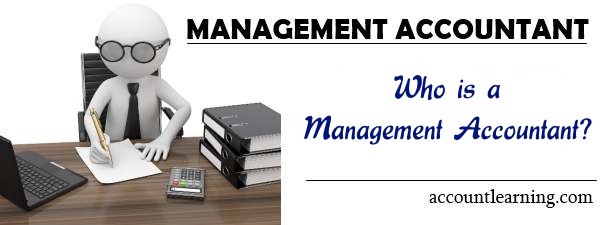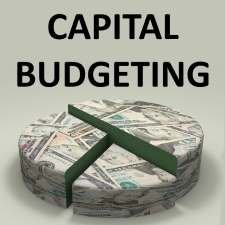Who is a Management Accountant | Role in Management | Functions
The management accounting system provides highly useful economic and financial data to the management. A channel is used to transmit the information efficiently and effectively that channel is management accountant.

Table of Contents
Who is management accountant?
The management accountant designs the format of the financial and cost control reports. These reports are presented before each level of management with the most useful data at the most appropriate time. Moreover, he/she educates management executives as the ways of using reports. Hence, sometimes, he/she described as the Chief Intelligence Officer of the top management.
Management requires an individual who is expected to gathers information, breaks it down and organizes it into meaningful categories. Moreover, he separates relevant and irrelevant information and then ranks the relevant information according to the degree of importance to management. The first rank information is supplied to management immediately. Likewise, least rank scoring information is presented before management as and when required. The relevant information are getting ranks on the basis situation prevailing within the business organization.
In nutshell, management accountant is the person preparing the information according to the needs of the management in an intelligible form and submitted at required time.
Management Accountant is otherwise called as Chief Accountant, Chief Accounts Officer, Controller of Accounts, Finance Controller, Finance Director, Chief Intelligence Officer, Finance Manager and Financial Advisor.
Status or Role of Management Accountant in a Management
According to Dr.Don Barker,
“Management Accountants will be presented with many opportunities for innovative actions in the global economic environment. In addition to their role of providing accurate timely and relevant information, management accountants will be expected to participate as business consultants and partners with management in the strategic planning process”.
According to Controller’s Institute Committee,
1. The Controller (or Management Accountant) should be an executive officer at the policy making level responsible directly to the Chief Executive Officer of the concern. His appointment or removal should require the approval of the Board of Directors.
2. The controller should be required by the Board of Directors to present directly periodical reports covering the operating results and financial condition of the business together with such other information as it may require.
3. The controller should preferably be a member of the Board of Directors. And if not, he should be closely associated with all other top policy making people. At a minimum he should be invited to attend the Board’s Meeting with the right to be heard.
Therefore, in practice, the management accountant is asked to work directly under the Managing Director or Chief Executive Officer with access to the Board of Directors as an invitee. The relationship between the top management of the concern and the management accountant is mutual confidence.
The functions of management accountant depend upon his status in the organization, agreement with the organization, experience and capacity of the management accountant. On this basis, the functions of management accountant are briefly explained below.

Functions of management accountant
1. Planning of Accounting Function
An accounting system is maintained in an organization which should cover standards of costs, sales forecast, production planning, profit planning, allocation of resources, capital budgeting and short term and long term financial planning. Moreover, he has to prepare the necessary procedures to implement the plan effectively.
2. Controlling
The management accountant has to measure the actual performance and compare with standard. Based on this comparison, he has to find the differences and interpret the results of operation and submit the same to all levels of management. This is done through appropriate accounting reports for controlling.
3. Reporting
The top management requests the management accountant to prepare the report for the root causes for an unfavorable event or operations. In this report, the accountant can pin point real reasons and the persons who are responsible.
4. Coordinating
He consults all levels of management for framing a policy or an action programme. Such type of consultation brings co-ordination between the accounts department and top management.
5. Interpreting
The accounting information is modified and presented before the management with interpretation. The interpretation is made in different phases. If so, real reasons for the operating results can be understood by the management.
6. Evaluation
He has to evaluate the effectiveness of policies, organization structure and procedures adopted for attaining the objectives. For which, he has to consult the same with functional managers and top executives.
7. Advising
He has to advise the management in order to improve the performance of operations.
8. Administration of Tax
A business organization is liable to pay value added tax, income tax and other taxes to the local government, state government and central government. In this aspect, the management accountant is expected to pay the taxes and maintain the accounting records as the case may be.
9. Government Reporting
He will have to supervise all the statements and returns which are to be submitted to the government periodically within due date.
10. Appraisal of External Effects
There may be changes in the state and central government policy. Sometimes, there may be amendments in the existing laws. These policy changes and amendments have an impact on the attainment of business objectives. The extent of impact has to be assessed by the management accountant.
11. Economic Appraisal
The economic condition of the nation is periodically published by the central government. Now, the management accountant is to make economic appraisal and find the influence of economic condition over the business activities. In this aspect, he can prepare a report and submit before top management along with his/her comments.
12. Protection of Assets
This function is performed through maintenance of separate fixed assets register for each type of fixed assets. Moreover, he can frame the rules and regulation for using each type of fixed assets. He can take insurance coverage to all types of fixed assets.

